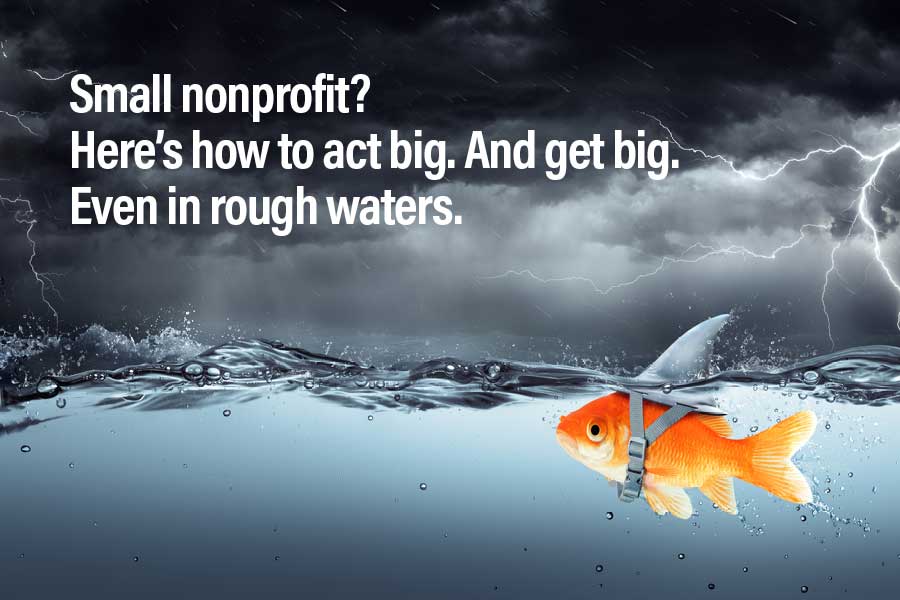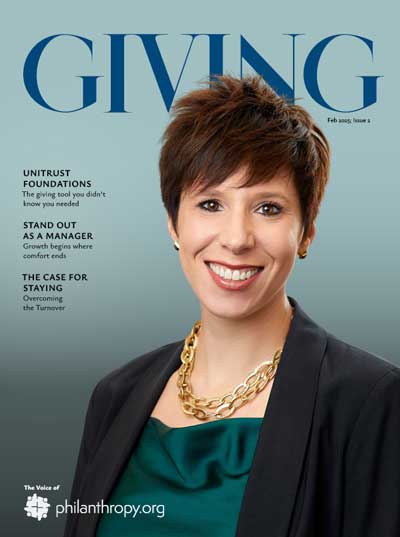Now more than ever, it is critical for small nonprofits to establish a planned giving program. Planned giving for the smaller nonprofit is simple and inexpensive — yes, even for a small charity.
Here are 21 tips on launching a program. And here are 10 tips and strategies on marketing your program.
If you’re not going after planned gifts, the bigger fish next door is. And since planned gifts are gifts from the heart, they inspire more cash gifts, too — which means you’re really losing out. In fact, if the nonprofit next door wins the planned gifts, your cash gifts will walk out the door, too. The first place to begin is learning the gift planning vehicles.
Consider this:
Savvy donors consider a planned giving program evidence that a nonprofit has a sensible plan for the future. What’s more, the “big” nonprofits realize this, and they’re using it (as they should!) to their advantage. It simply establishes legitimacy (yes, it’s not about the money). If you don’t get on the boat now, you run the risk of being left behind — like a mom-and-pop corner store after Walmart moves in to the neighborhood.
If you’re consistently saying “I don’t have the time” you’re just making excuses; you’re being reactive instead of proactive. And what’s worse? You’re deferring the deferred. A simple planned giving program is easy to set up, easy to market, and easy to maintain.
Here are 10 more evidence-based reasons to establish a planned giving program:
- The largest intergenerational money transfer (Great Wealth Transfer, GWT) in history is happening now. This asset transfer is the perfect time for a planned giving program — just think of the tax deductions would-be donors are desperately trying to find!
- The average planned gift is 200 to 300 times larger than a donor’s largest annual gift.
- The average planned gift is between $35,000 and $70,000. Still want to focus on getting a $20 annual gift?
- Even during economic downturns, planned gifts have consistently risen.
- Only 5% of this nation’s wealth is in cash. The rest is in easy to give assets like stocks, etc.
- An established planned giving program costs about .3 to .15 cents for every \$1 raised.
- Those who work in the planned giving field earn 150% to 200% more than those in the annual giving field.
- Anyone can make a planned gift — it’s not just for the wealthy. In fact, bequests are the main gift of the middle class.
- Planned giving is for “the rest of us” (read: I want to Meet a Rich Guy by Karen Martin).
- You don’t need to be a tax law expert — you just need people skills.
Bequest — The Gift that Keeps on Giving
Now let’s back up: A simple planned giving program is easy to set up, easy to market, and easy to maintain. If you do nothing else, set up a bequest program. The majority of all planned gifts are in the form of a bequest. It’s the easiest planned gift to make — it’s either written into a will, or added through a codicil. In 2017, as reported by Charity Navigator, giving by bequest increased by 2.3% to $35.70 billion.
- Setting up a bequest program is easy.
- Marketing your bequest program is easy, too: Include it on your website (you can begin a planned giving website for as little as $995), mention it in donor communications (you can even include a link in your email signature), and send out postcards a few times a year. Have a vendor create a simple bequest brochure.
- Maintaining your program is even easier: Keep your materials up to date, and send out regular postcards/donor communications — oh, and watch your endowment grow!
Do it today. Your board will be happy, and you might even get a raise!
Categories: New Opportunities, Planned Giving Marketing



